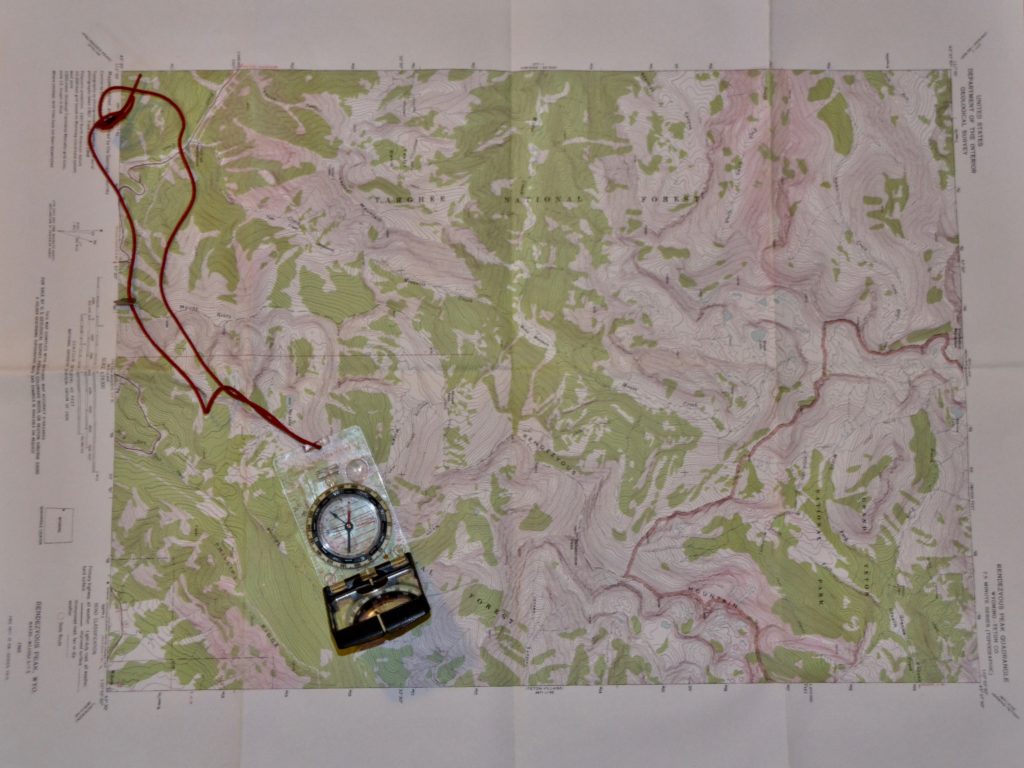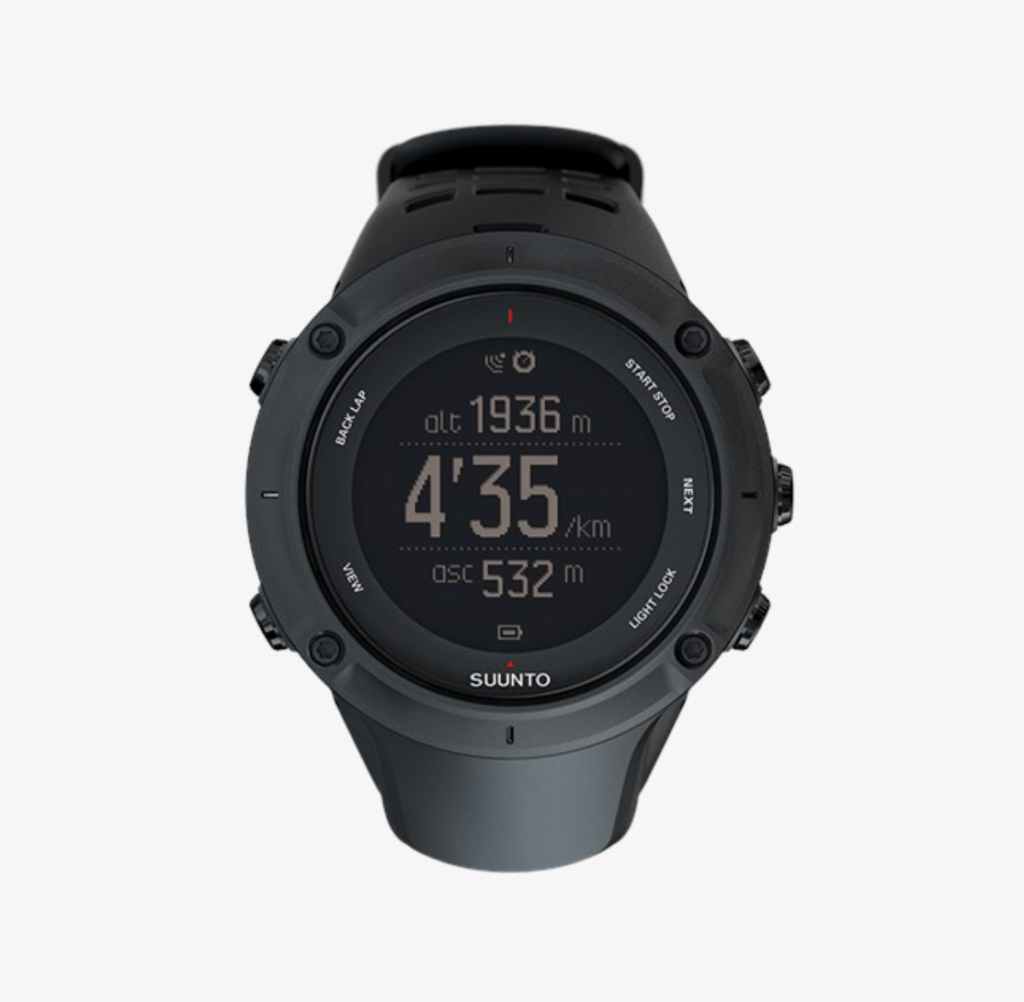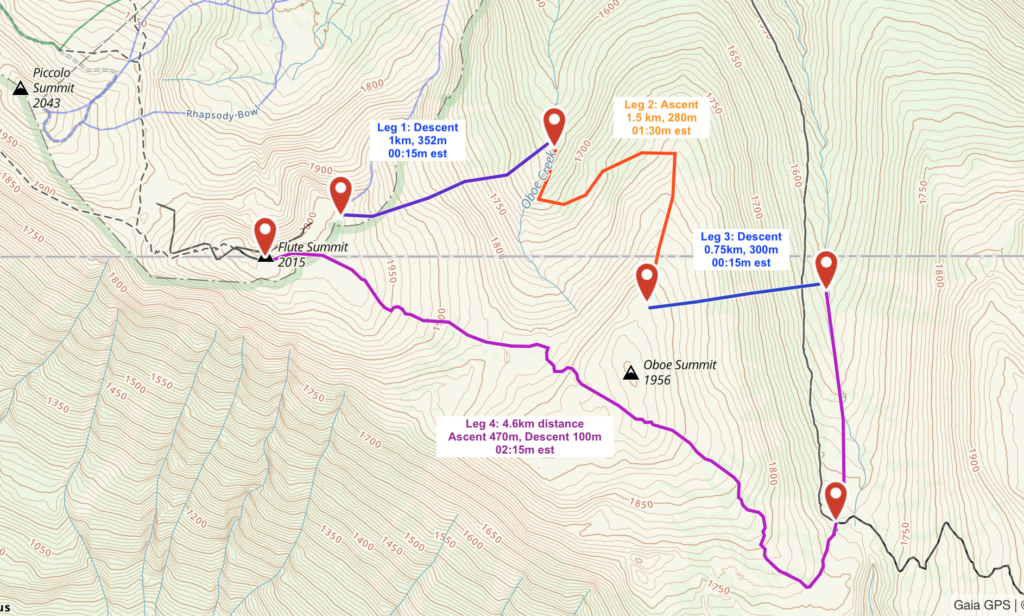Task No. 3: Map your route prior to departure. Once all of our field tools have been calibrated and our field navigational skills are tuned up, it’s time to dive more deeply into home trip-planning. There is a plethora of modern mapping websites that can aid in this, and my advice is to focus on one of them and get efficient and proficient with it. Saddle up to your computer with a cold one (or three) and get to know a few tools that you can use to map a route prior to departure. (On CalTopo, navigate to the “add new object/line;” on Gaia GPS, go to “create route.”) Then pair this with the corresponding phone app, and you are in business. The tools available are endless, but the crucial ones are drawing waypoints and tracks, and using them to estimate distances and elevation loss and gain. Drop on some slope-angle layers and toggle the satellite imagery off and on to really learn the terrain. Memorize the landscape in satellite imagery and picture what it will be like to travel through that terrain. This will significantly help your navigation once in the field.
Task No. 4: Estimate the time it will take you to ski up or down through the mountains. When developing tour plans, you need to estimate how long each leg will take you. There’s an equation that Swiss guide Werner Munter developed that takes into account distance and vertical feet (time = distance (km) + elevation (m/100) / rate). There are also apps to ease the calculation, but the best way to figure it out is to apply your own experience. Keep track of the time it takes you to go 1,000 vertical feet in low-angle, medium-angle, and steep-angle terrain. Then look at your route on the map and estimate your likely travel time based on your historical average pace in similar terrain.
Task No. 5: Share your plans with your partners. When you have some tracks, way points, time estimates, and maps downloaded to your phone, share it all with your partners so you have multiple backups to your equipment. Make sure the batteries are charged, backup batteries are charged, and devices are being stored and used in accordance with your other safety gear.
Task No. 6: Evaluate your route after your return. Once you’re out there, track your tour for the day. Upload it when you get home, then sit back and play Monday morning quarterback to see where you made good choices, mistakes, made up time or lost it, and generally sent or botched it.
We all learn best from our mistakes, so edit your tracks to make the best route for the next time. And remember, keep at it, because you will only get better with time and practice.
Evan Stevens is an internationally certified guide and expert on cartography and geographic information systems. He worked for five years with the Utah Avalanche Center before moving to British Columbia, where he now guides, teaches, and oversees ACMG courses and exams.





